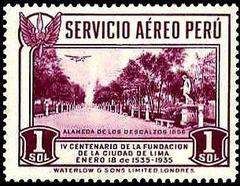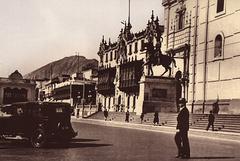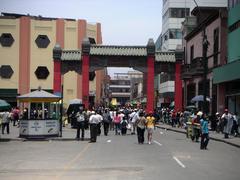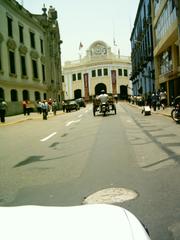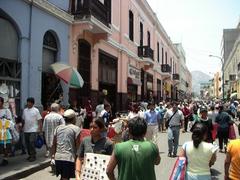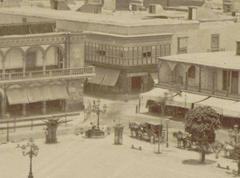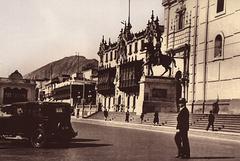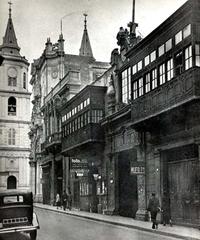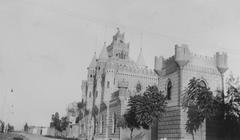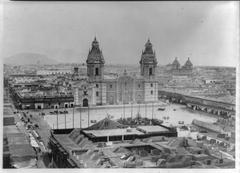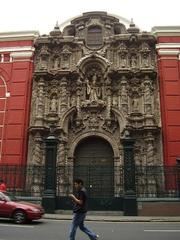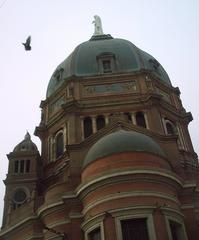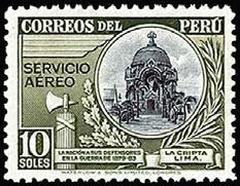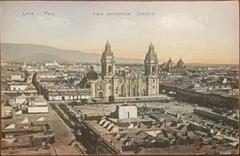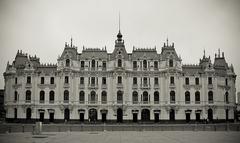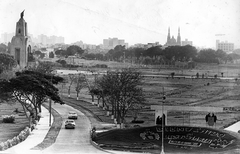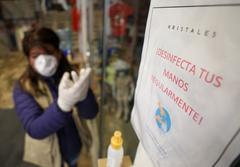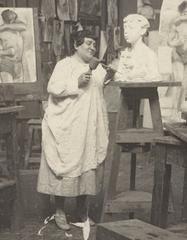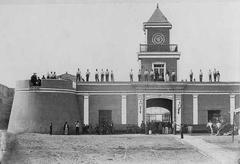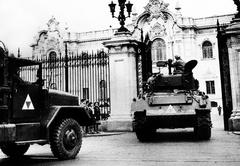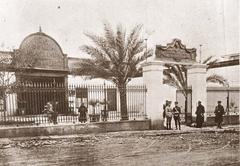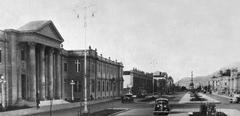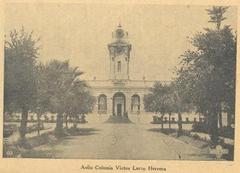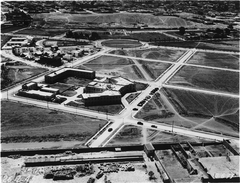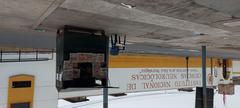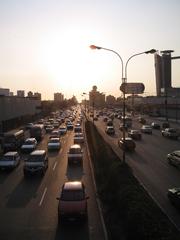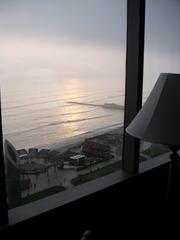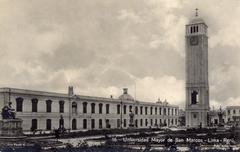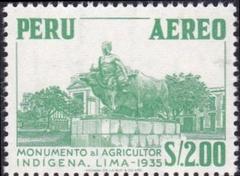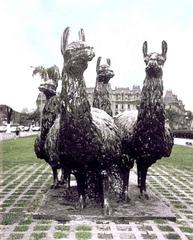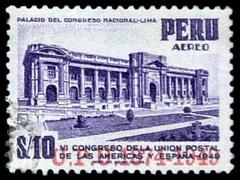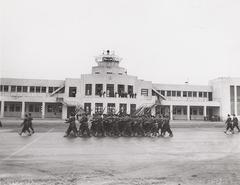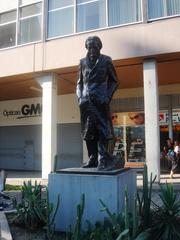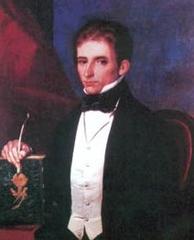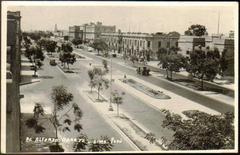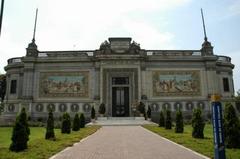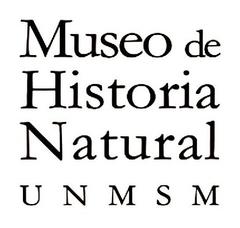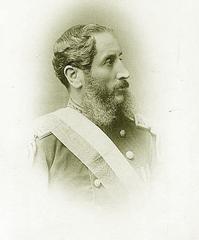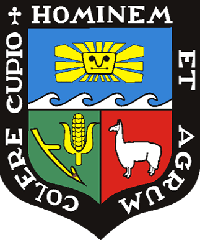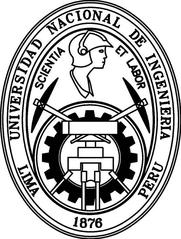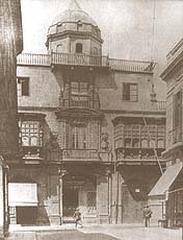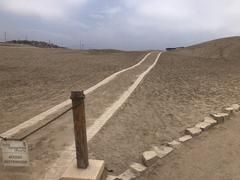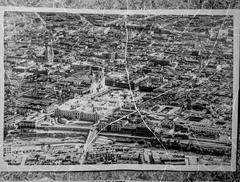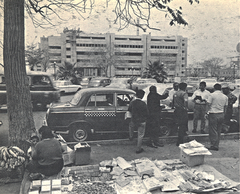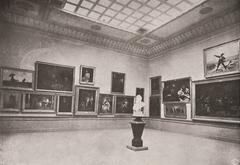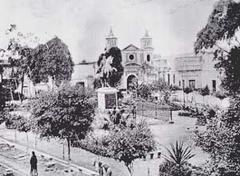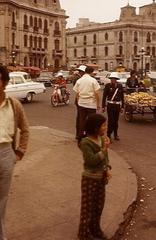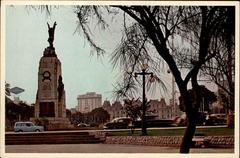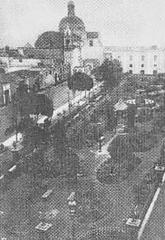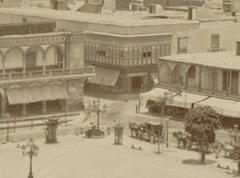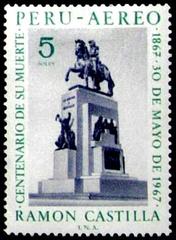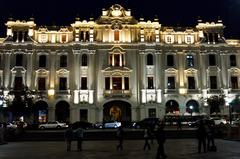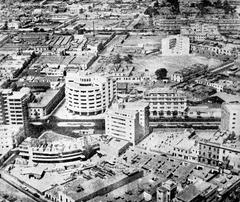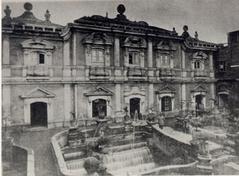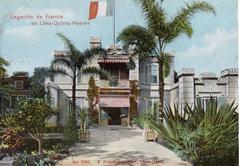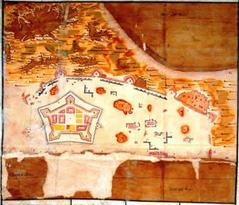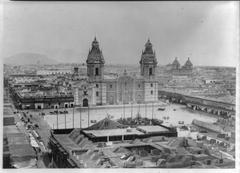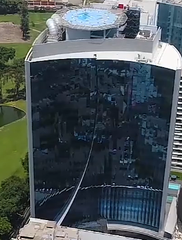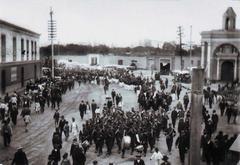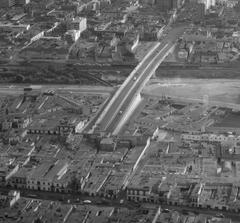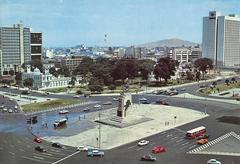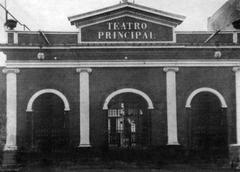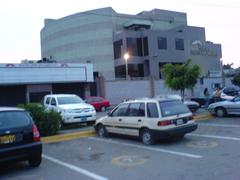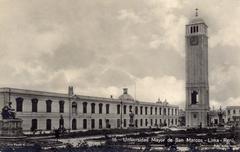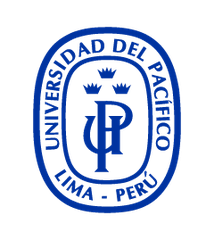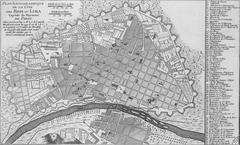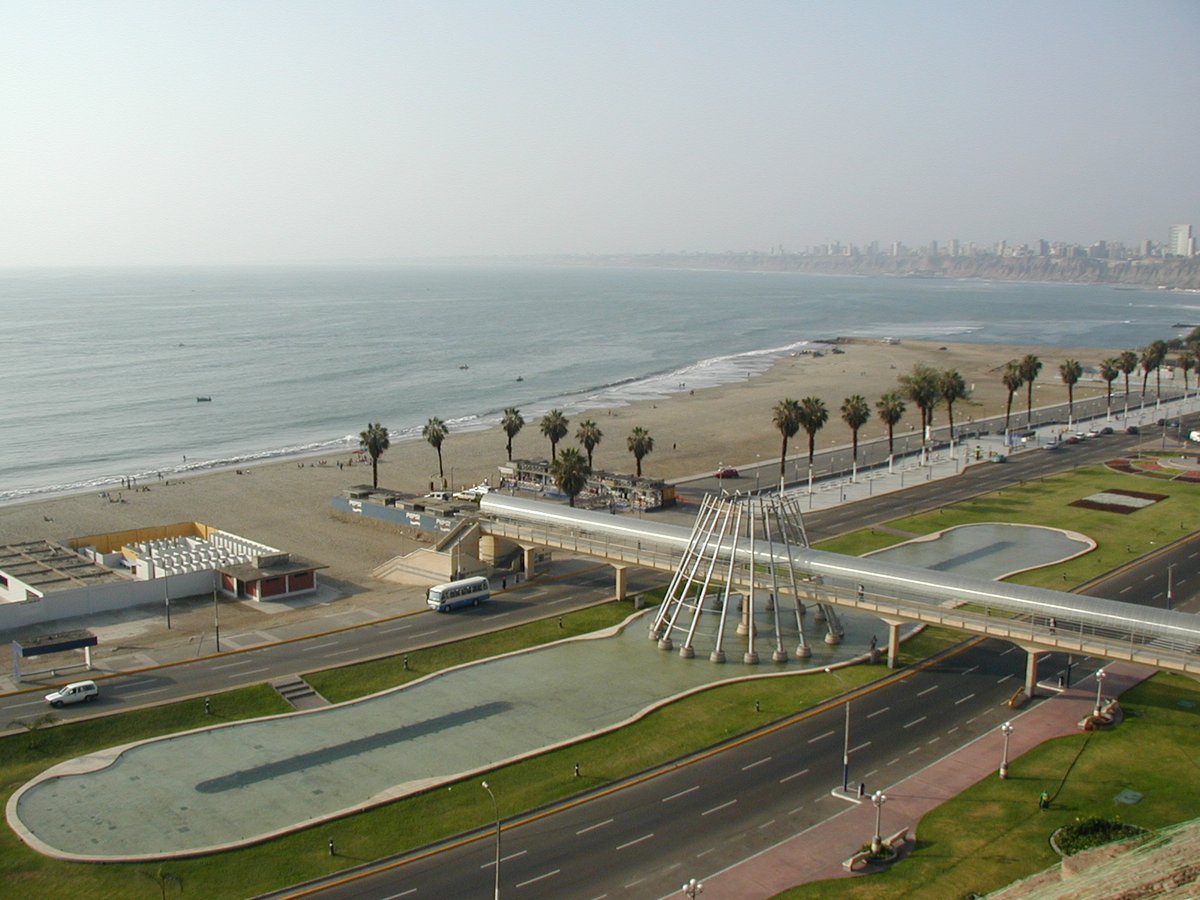
Visiting Malecón Grau, Lima: Hours, Tickets, and Travel Tips
Date: 17/07/2024
Introduction
Planning a trip to Lima, Peru? One iconic spot you can’t miss is Malecón Grau, a coastal promenade steeped in history and culture. Located in the district of Chorrillos, Malecón Grau is named after Admiral Miguel Grau, a revered Peruvian naval hero known for his role in the War of the Pacific (1879-1884) (source). This historic promenade, developed in the late 19th century during the presidency of Nicolás de Piérola, offers panoramic views of the Pacific Ocean and serves as a tranquil environment for residents and visitors alike. The architectural style of Malecón Grau features a blend of neoclassical and modernist elements, reflecting the eclectic tastes of the late 19th and early 20th centuries. In addition to its scenic beauty, Malecón Grau has witnessed significant historical events and continues to be a vibrant cultural hub, hosting a variety of events and activities throughout the year. Whether you’re interested in its rich history, cultural significance, or recreational opportunities, Malecón Grau is a must-visit destination in Lima.
Table of Contents
- Introduction
- Early Development and Significance
- Architectural and Urban Evolution
- Role in Historical Events
- Visiting Hours and Ticket Prices
- Travel Tips
- Nearby Attractions
- Accessibility
- Special Events and Guided Tours
- Photographic Spots
- Preservation and Modernization Efforts
- Cultural and Social Impact
- Future Prospects
- Conclusion
Early Development and Significance
Malecón Grau, located in the district of Chorrillos in Lima, Peru, is a historic promenade that has played a significant role in the city’s coastal development. The origins of Malecón Grau date back to the late 19th century, a period marked by urban expansion and modernization efforts in Lima. Named after the revered Peruvian naval hero, Admiral Miguel Grau, the promenade was initially conceived as a leisure space for the city’s burgeoning middle and upper classes. The construction of Malecón Grau began in the 1890s, during the presidency of Nicolás de Piérola. This era was characterized by a wave of public works aimed at beautifying Lima and improving its infrastructure. The promenade was designed to offer panoramic views of the Pacific Ocean, providing a scenic and tranquil environment for residents and visitors alike. The choice of Chorrillos as the location for Malecón Grau was strategic, as the district was already a popular seaside resort known for its beaches and pleasant climate.
Architectural and Urban Evolution
The architectural style of Malecón Grau reflects the eclectic tastes of the late 19th and early 20th centuries. The promenade features a blend of neoclassical and modernist elements, with elegant balustrades, ornate lampposts, and well-manicured gardens. Over the years, the area has undergone several renovations to preserve its historical charm while accommodating contemporary needs. One of the most significant transformations occurred in the 1920s, under the administration of President Augusto B. Leguía. This period, known as the ‘Oncenio,’ saw extensive urban development projects across Lima. Malecón Grau was expanded and enhanced with new amenities, including public benches, fountains, and recreational facilities. The improvements made during this time solidified the promenade’s status as a premier destination for leisure and social gatherings.
Role in Historical Events
Malecón Grau has been a witness to numerous historical events that have shaped the identity of Lima and Peru. One of the most notable events was the War of the Pacific (1879-1884), in which Admiral Miguel Grau emerged as a national hero. The promenade’s name serves as a tribute to his legacy and the sacrifices made by Peruvian sailors during the conflict. In the 20th century, Malecón Grau also played a role in the social and political movements that swept through Peru. During the 1960s and 1970s, the promenade became a gathering place for public demonstrations and cultural events. It was a space where citizens could express their views and engage in civic activities, reflecting the dynamic and evolving nature of Peruvian society.
Visiting Hours and Ticket Prices
Malecón Grau is open to visitors year-round. The promenade does not have an entrance fee, making it a popular spot for both locals and tourists. However, specific attractions or events may have their own visiting hours and ticket prices.
Travel Tips
For those planning a visit, it’s recommended to wear comfortable walking shoes and bring sun protection. The best time to visit is during the early morning or late afternoon to avoid the midday heat.
- Best Time to Visit: Early morning or late afternoon
- What to Wear: Comfortable clothing and footwear; bring a hat and sunscreen
Nearby Attractions
While visiting Malecón Grau, don’t miss nearby attractions such as Morro Solar and Chorrillos Beach. These sites offer additional recreational opportunities and stunning views.
Accessibility
Malecón Grau is accessible to visitors of all ages and abilities. The promenade features smooth pathways and ramps, making it wheelchair-friendly.
Special Events and Guided Tours
Throughout the year, Malecón Grau hosts a variety of events, including festivals and cultural exhibitions. Guided tours are also available, providing in-depth insights into the history and significance of the promenade.
Photographic Spots
Photography enthusiasts will find numerous spots along Malecón Grau perfect for capturing panoramic views of the Pacific Ocean and the historic architecture.
Preservation and Modernization Efforts
In recent decades, efforts to preserve and modernize Malecón Grau have been undertaken by both governmental and non-governmental organizations. The Municipality of Chorrillos has implemented various projects aimed at maintaining the promenade’s historical integrity while enhancing its functionality for contemporary use. One such initiative is the ‘Proyecto de Recuperación del Malecón Grau,’ launched in the early 2000s. This project focused on restoring the promenade’s original architectural features, improving public safety, and promoting environmental sustainability. Key components of the project included the restoration of historic lampposts, the installation of modern lighting systems, and the creation of green spaces to enhance the area’s aesthetic appeal.
Cultural and Social Impact
Malecón Grau continues to be a vibrant and dynamic space that reflects the cultural diversity and social fabric of Lima. The promenade hosts a variety of events throughout the year, including festivals, art exhibitions, and sports activities. These events attract both locals and tourists, contributing to the area’s economic vitality and cultural richness. The promenade’s role as a social hub is further enhanced by its proximity to other notable attractions in Chorrillos, such as the Morro Solar and the Chorrillos Beach. Visitors to Malecón Grau can enjoy a range of recreational activities, from leisurely strolls along the waterfront to more adventurous pursuits like paragliding and surfing.
Future Prospects
Looking ahead, the future of Malecón Grau appears promising, with ongoing efforts to enhance its appeal and accessibility. Plans for further development include the construction of new pedestrian pathways, the expansion of green spaces, and the introduction of smart technologies to improve visitor experience. The continued investment in Malecón Grau reflects a broader commitment to preserving Lima’s historical heritage while embracing modernity. As a symbol of the city’s past, present, and future, the promenade remains a cherished landmark that embodies the spirit and resilience of Lima and its people.
Conclusion
Malecón Grau stands as a testament to Lima’s rich historical and cultural heritage. From its early development in the late 19th century to its modern-day significance, the promenade has evolved into a vibrant space that attracts both locals and tourists. The efforts to preserve and modernize Malecón Grau underscore its enduring importance as a cultural and historical landmark (source). Visitors can enjoy a range of activities, from leisurely walks along the scenic coastline to participating in cultural events and festivals. The promenade’s accessibility and family-friendly amenities make it an ideal destination for visitors of all ages. As ongoing development plans aim to enhance its infrastructure and facilities, Malecón Grau’s future looks promising, ensuring that it remains a cherished landmark that embodies the spirit and resilience of Lima and its people.


